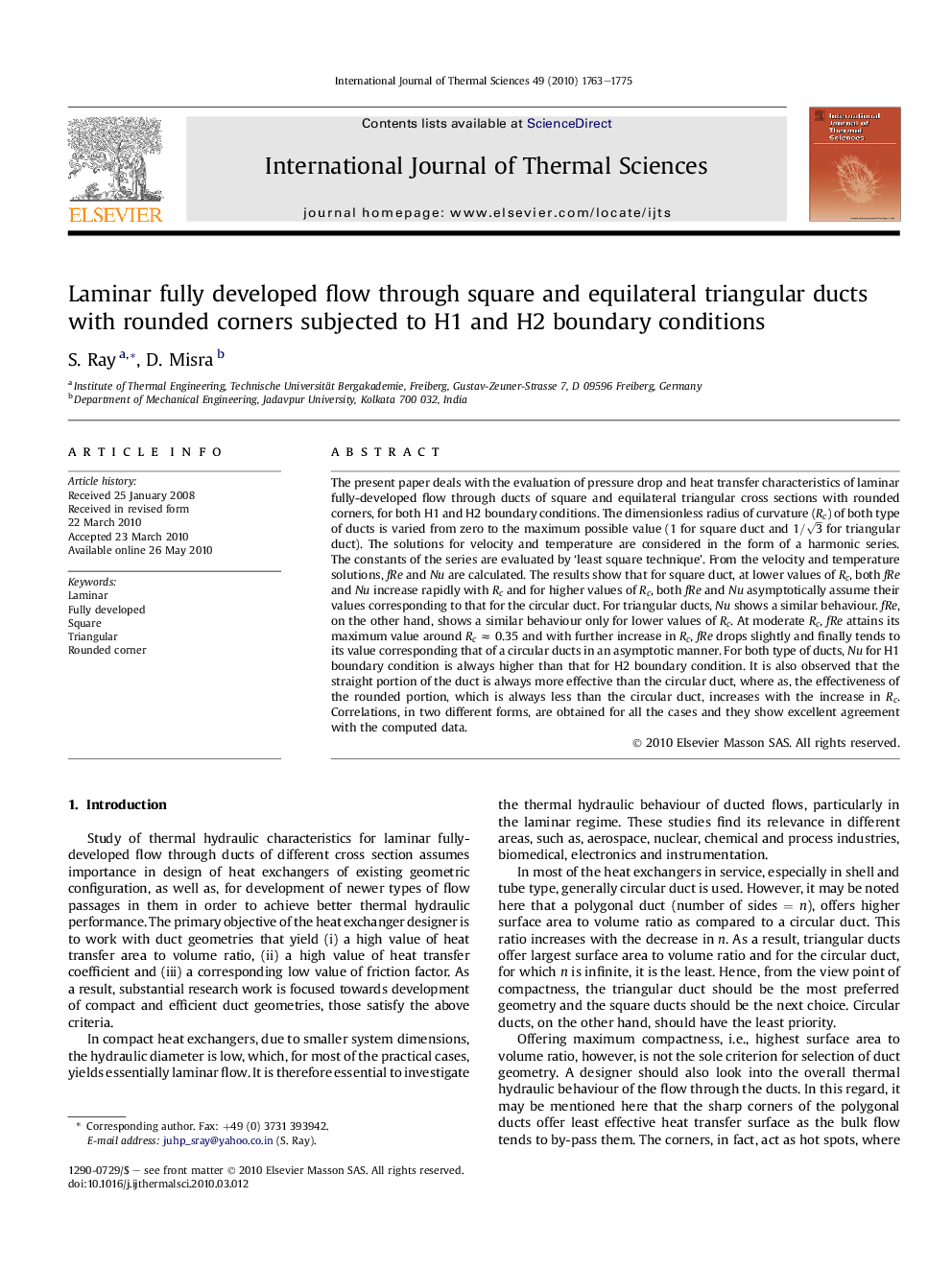| Article ID | Journal | Published Year | Pages | File Type |
|---|---|---|---|---|
| 669541 | International Journal of Thermal Sciences | 2010 | 13 Pages |
The present paper deals with the evaluation of pressure drop and heat transfer characteristics of laminar fully-developed flow through ducts of square and equilateral triangular cross sections with rounded corners, for both H1 and H2 boundary conditions. The dimensionless radius of curvature (Rc ) of both type of ducts is varied from zero to the maximum possible value (1 for square duct and 1/3 for triangular duct). The solutions for velocity and temperature are considered in the form of a harmonic series. The constants of the series are evaluated by ‘least square technique’. From the velocity and temperature solutions, fRe and Nu are calculated. The results show that for square duct, at lower values of Rc, both fRe and Nu increase rapidly with Rc and for higher values of Rc, both fRe and Nu asymptotically assume their values corresponding to that for the circular duct. For triangular ducts, Nu shows a similar behaviour. fRe, on the other hand, shows a similar behaviour only for lower values of Rc. At moderate Rc, fRe attains its maximum value around Rc ≈ 0.35 and with further increase in Rc, fRe drops slightly and finally tends to its value corresponding that of a circular ducts in an asymptotic manner. For both type of ducts, Nu for H1 boundary condition is always higher than that for H2 boundary condition. It is also observed that the straight portion of the duct is always more effective than the circular duct, where as, the effectiveness of the rounded portion, which is always less than the circular duct, increases with the increase in Rc. Correlations, in two different forms, are obtained for all the cases and they show excellent agreement with the computed data.
